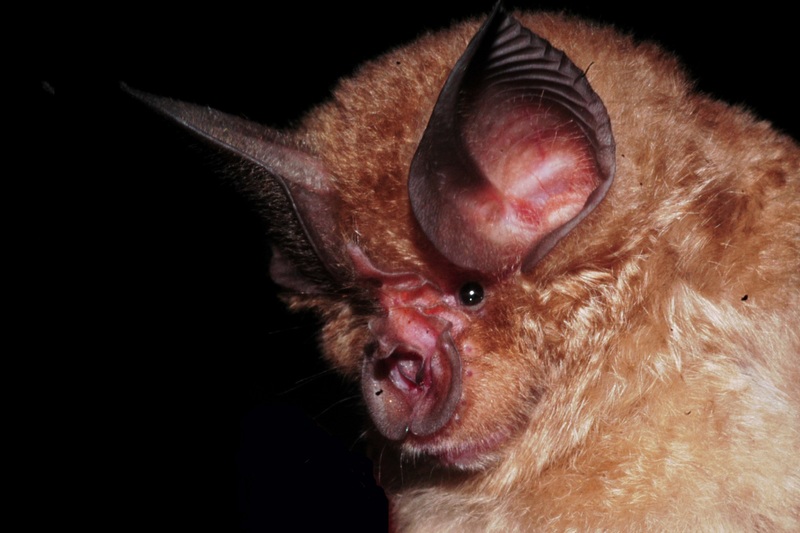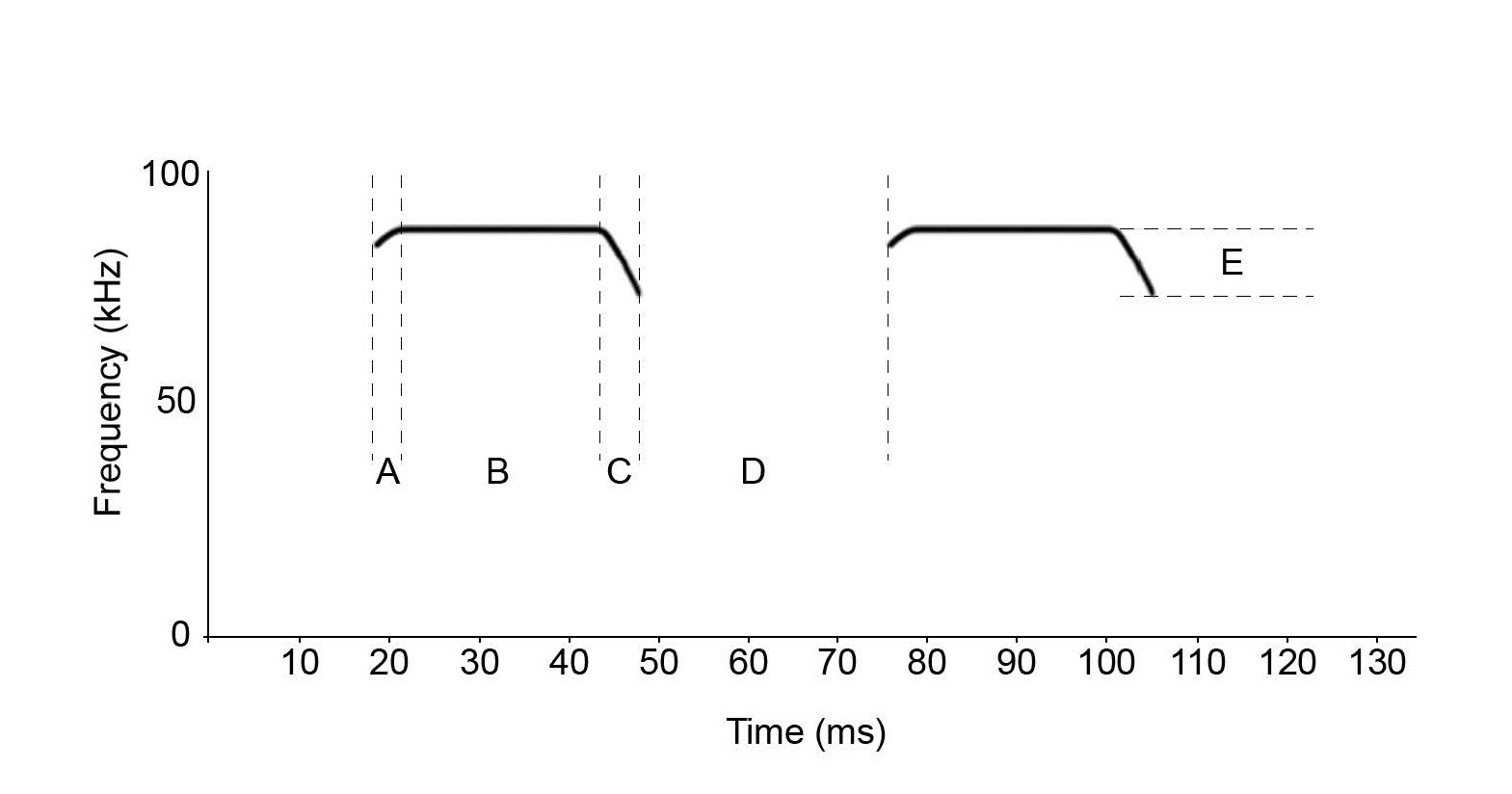Do bats chat?
23 October 2018 | Story Natalie Simon. Photos Supplied. Read time 10 min.
Picture a bat hunting in total darkness at the dead of night. It is flying at a speed around 100 kilometres an hour and to detect obstacles or prey it sends out an echolocation pulse at an acoustic frequency too high for the human ear to hear. That pulse then travels at about 340 metres per second and reflects off an object, as an echo, back to the bat. The bat – while still moving forward – uses this echo to detect that object with sufficient time to execute movement: either to intercept or to avoid. This remarkable ability is called echolocation. It represents a major evolutionary innovation in mammalian sensory systems and is the focus of Professor David Jacobs’ research.
“Along with the ability to fly, the evolution of echolocation has allowed bats to adapt to a wide spectrum of nocturnal habitats and modes of living,” says Jacobs, Department of Science and Technology/National Research Foundation South African Research Chair in Animal Evolution and Systematics. “This has made them the most ecologically diverse of all mammals.”
A dataset published by Jacobs in UCT’s open-data repository ZivaHub supports the theory that echolocation could also play a key role in bats’ communication, although this may involve more aspects of echolocation calls than previously believed.
Echolocation and communication
“There is an idea that echolocation can also be used by bats for communication,” says Jacobs. “Currently, my lab and a few others around the world are testing this hypothesis.”
Jacobs and his colleagues spent three months in the field in South Africa, Zimbabwe, Malawi and Zambia collecting information about the echolocation calls of four acoustic groups of bats. The resulting data set captures the echolocation frequencies of more than 10 bat species, including maximum resting frequency, minimum resting frequency, bandwidth and call duration.
The study, which resulted in a publication in PLOS One, found that bats do learn information, such as sex and species, from the calls of other echolocating bats. However, such information is not necessarily gleaned from the maximum resting frequency alone, as previously believed – other parameters of the echolocation call are also important.

The most important parameter of echolocation is the maximum acoustic frequency (see section B in diagram). But it seems that listening bats also use other call parameters to glean information about the echolocating bat. There are two frequency-modulated components: the initial (section A in diagram) and the terminal (section B in diagram), where the acoustic frequency is lower – either increasing in acoustic frequency towards maximum frequency or decreasing in frequency from the maximum frequency – and it is these parts of the echolocation call that encodes whether the echolocating bat is male or female, what species it is, and whether it is an adult or sub-adult bat, even when there is complete overlap between the maximum frequencies of the echolocating bats.
Communicating or eavesdropping?
“I must add that my lab is not yet convinced that echolocation is used for communication,” says Jacobs. “The trouble is with the definition of communication.
“A bat can listen in on echolocation calls from another bat to get information, but unless the transfer of information is intentional it cannot be classified as communication.”
If not intentional, it is simply the equivalent of eavesdropping on a conversation and being able to tell from a voice and accent what sex the speaker is and where they are from. In the animal world this is called information leakage. If the echolocation was meant as communication, researchers would expect to see a particular behavioural response by the receiver.
Bats echolocation and understanding evolution
Understanding to what extent bats use echolocation as communication is important as it relates to the understanding of evolution of function, explains Jacobs. The innovation of the anatomical features of the bat provides evolutionary biologists with an opportunity offered by few other mammals to understand the process of evolution.
“The diversity in bats has arisen from the elaboration of the basic mammalian body plan, with very few completely new anatomical structures,” says Jacobs. “The bat’s wings, for example, evolved from the retention of all the bones present in the forelimbs of most vertebrates with the wing shaped by skin and muscle stretched between the bones.
“Similarly, echolocation evolved from the simple elaboration of the mammalian auditory system.”
To study evolutionary adaptation, we need to understand what changes a group of animals has undergone, says Jacobs.
Because bats are mammals, researchers can compare bats with other mammals and with different bat species to understand what changes have taken place. Interpreting the results of these comparisons is much easier in bats because their unique and complex anatomical features have resulted from a simple elaboration of the features that already exist in other mammals.
The finding that bats use echolocation to glean information about other bats, but on a different frequency, relates to the understanding of the evolution of function. Changes in form are inextricably related to changes in function; a change in an anatomical feature may result in a change in the function of that feature. Similarly, a change in function could result in an anatomical feature changing in ways that optimise that function, explains Jacobs.
Any feature that has a dual function – an acoustic sense, in the case of echolocation, which functions in orientation and perhaps also in communication – provides evolutionary biologists with an ideal opportunity to investigate how changes in the feature can lead to changes in function and vice versa.
For instance, some bats use their snout both to chew food and to emit echolocation pulses. There is however a trade-off between a bat’s ability to exert a bite force – which requires a shorter snout – and its ability to send out an echolocation pulse at a lower acoustic frequency – which requires a longer snout.
“Because of the precision needed in echolocation, it appears that during the evolution of bats, the requirements of echolocation won out and the volume of the nasal capsules have been optimised to generate the appropriate echolocation frequency for the particular habitat of the bat – at the expense of the bite force exerted by the snout,” says Jacobs.
The value of open publication of data
For Jacobs, publishing this data set on ZivaHub means that it can form the foundation of further study investigating to what extent communication through echolocation is intentional or only information leakage. It could also contribute to understanding whether or not the dual purpose of echolocation has resulted in other evolutionary trade-offs.
“The value of publishing scientific data for reuse across the community is clear,” says Jacobs. “It means funds won’t be spent on duplicating research and researchers can collaborate to expand existing data sets, rather than constantly reinventing the wheel. We must however ensure that there is equity in access to and transferal of data, particularly between developed and developing countries.”
 This work is licensed under a Creative Commons Attribution-NoDerivatives 4.0 International License.
This work is licensed under a Creative Commons Attribution-NoDerivatives 4.0 International License.
Please view the republishing articles page for more information.










